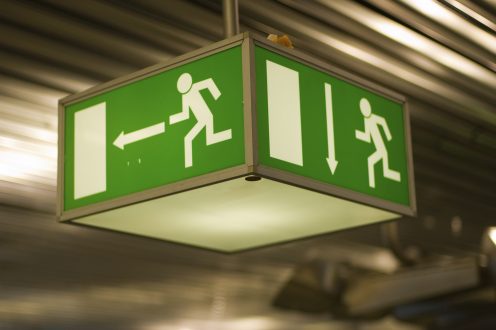The Complete Guide To Effective Fire Safety
Whether you’re an employer, owner of a commercial or industrial premises, landlord or occupier of any other non-domestic property – you are the responsible person, according to the Fire Safety Order. As such, you have an obligation to protect the occupants, employees and residents of that building by undertaking appropriate fire safety measures.
Below is an overview of your duties. For more detailed information, please contact Health & Safety Training Ltd on 0191 6440 332.
Fire Risk Assessments
You must carry out a fire risk assessment of your premises and regularly review it to ensure you have properly identified all possible risks and fire hazards.
You should also identify which people are at risk, taking care to understand specific risks for individuals including those with a disability, children and the elderly.
Once completed you will need to assess these risks and evaluate their level in order to properly implement a procedure to reduce the risk or eliminate it completely.
Everything should be properly recorded and your findings should be communicated to all occupants and employees. Some of the most important aspects include:
- Preparing an effective evacuation procedure to ensure everyone can escape via pre-planned routes and exits in the event of an emergency.
- Implementing adequate fire detection and warning systems and making fire fighting equipment available.
- Ensuring everyone undergoes relevant fire safety training enabling them to respond appropriately in an emergency situation and appointing responsible fire wardens to oversee measures.
Fire Safety Equipment
 Understanding what fire safety equipment you need can be difficult, but with the assistance of a professional, this should become clearer when undertaking your fire risk assessment. Two of the most essential pieces of the equipment you will need are extinguishers and alarms:
Understanding what fire safety equipment you need can be difficult, but with the assistance of a professional, this should become clearer when undertaking your fire risk assessment. Two of the most essential pieces of the equipment you will need are extinguishers and alarms:
- Nearly every property will need a tailored fire alarm and warning system, with detection points and sounders to warn occupants of any danger and allow them adequate time to evacuate. Larger premises may require a specially designed wireless system with detection zones and a dedicated control panel, whereas smaller alarms may only require a traditional alarm with call points and smoke detectors.
- Fire extinguishers are one of the most effective methods of controlling localised fire outbreaks, but using the wrong type of extinguisher can accelerate the fire and heighten the danger – For example, you should use a water extinguisher for paper fires, but if the fire is in an office environment with lots of computer equipment a water extinguisher could be dangerous as it could conduct the electricity and harm the user. Instead you will need a dry powder extinguisher that can be used on both paper and electrical fires.
A professional supplier or risk assessor will guide you through the various types of equipment ensuring that you have the right fire safety and protection for each area of your business.
Evacuation Plans
Drawing up an effective evacuation plan should combine everything you learnt in your risk assessment with best practice. Plans should be individual to your premises, the occupants and the risks present, and must evidence:
- That you have a clear passage of escape
- Clearly marked exits and escape routes
- Emergency doors that provide fast exit
- Adequate emergency lighting, if necessary
- Training has been complete by all occupants
- Special arrangements has been made for people with mobility needs
- A safe meeting point has been agreed
Fire Wardens
You should appoint a fire warden of fire marshal, who will be responsible for overseeing general fire safety, using fire extinguishers and coordinating evacuations. This person should be given adequate training to carry out the role safely and legally, giving them an insight into relevant fire safety regulations and precautions.
Your fire warden will then be able to:
- Liaise with the fire service
- Take the correct action on discovering a fire
- Understand and implement fire safety legislation & precautions
- Understand the chemistry and common causes of a fire
- Execute fire drills and evacuation procedures
- Effectively use fire extinguishers.
Professional fire safety training
As a responsible person you have a duty to protect everyone in your building, and as an employer the best way to do this is to provide fire awareness training for your staff and occupants. Professionally delivered training will ensure you have fulfilled your duties and given your employees the information they need to stay safe and protected.
Fire Awareness Training from the team at Health & Safety Training Ltd will give everyone a thorough understanding of:
- The nature and types of fire
- The common causes of fire and how it spreads
- Effective means of escape from fire
- Different methods of tackling a fire
- Identification of different extinguishers and their use
- Correct methods of fire attack and safe withdrawal
For any more information about your fire safety obligations and how to fulfil them – contact the team at HST Ltd. With years of experience providing tailored fire safety training and a team of dedicated and professional instructors, you can be sure we can help.
Almost 50% Of Construction Sites Fail To Meet HSE Safety Standards 10 Forklift Tips to Keep Your Workplace Safe





